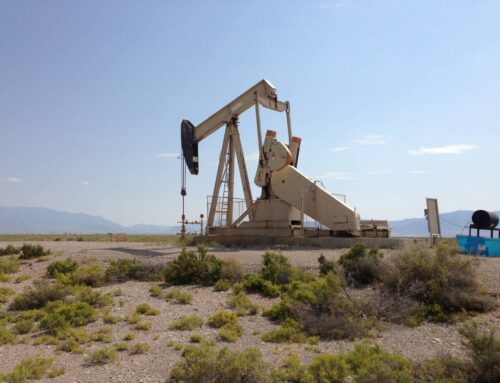On September 6th, the Bureau of Land Management (BLM), under the Department of Interior (DOI), offered 81 parcels of federal land – encompassing 67,183 acres – for oil and gas development in Wyoming. In total, BLM sold leases to 53 parcels covering 35,701 acres of federal land for oil and gas development, roughly 53% of the total acreage offered at the auction. The lease sales generated $13.2 million in total revenue, which is shared between federal and state taxpayers in Wyoming.
The average winning bid for these leases was $367/acre. This is more than double the average bid per acre of all leases sold between 2016 and 2020, which was $170/acre. Half of the acreage leased today was sold at the minimum bid of $10/acre.
Today’s lease sale results are similar to the results of the previous Wyoming oil and gas lease sale this year, which offered 127,015 acres of federal land and sold 69,149 acres, just over half of the acres offered. On average, the winning bid for leases sold in the June auction was $211/acre.
| Acres Offered | Acres Sold | % Acres Sold | Avg. Bid per Acre | Total Revenue | |
| Wyoming | 67,183 | 35,701 | 53% | $367 | $13,207,883 |
| Acres Sold at Minimum Bid | % Acres Sold at Minimum Bid | |
| Wyoming | 17,702 | 50% |
This was the sixth onshore federal oil and gas lease sale of 2023 and the second sale held in Wyoming during the same period. Previous sales were held in Kansas and New Mexico in May, North Dakota, Wyoming, Louisiana, and Mississippi in June, and in Nevada in July. And additional sales are scheduled in Montana, North Dakota, and Utah for later this month.
All the federal onshore oil and gas lease sales offered this year will contain recent reforms that were implemented in the Inflation Reduction Act (IRA). These include:
- A federal onshore royalty rate of 16.67% (raised from 12.5%)
- Rental rates of $3/acre for the first 2 years, $5/acre for years 3-8, and no less than $15/acre for years 9-10 (raised from $1.50/acre for years 1-5 and $2/acre for years 5-9)
- Minimum bid of $10/acre (raised from $2/acre)
- End to noncompetitive leasing
While these changes represent a significant step toward fair returns for federal oil and gas resources, current system shortcomings persist.
In late July, DOI released a proposed rule that would codify reforms made by Congress in the IRA, as well as other recommendations from the DOI’s Report on the Federal Oil and Gas Leasing Program. Importantly, the proposed rule would update federal onshore bonding requirements, which are supposed to ensure that the cleanup of oil and gas wells is paid for by operators, not taxpayers. However, current minimum bonding requirements fail to cover the high costs of well reclamation. The average cost to reclaim an orphaned well in Wyoming is $5,389/well but the Government Accountability Office reported that the average value of bonds held by DOI in 2019 was only $2,122/well, leaving taxpayers to shoulder the remaining costs.
The proposed rule seeks to increase the minimum lease bond from $10,000 to $150,000, increase the minimum statewide bond from $25,000 to $500,000, and eliminate nationwide and unit bonds. The rule would also direct oil and gas leasing away from sensitive areas and toward land with existing oil and gas infrastructure or high production potential.
For too long, outdated oil and gas leasing policies in Wyoming cost federal and state taxpayers billions of dollars in potential revenue and left taxpayers to shoulder mounting liabilities. A recent report by Taxpayers for Common Sense found that, over the last decade, taxpayers lost $3.8 billion from outdated rates and fees in Wyoming. Furthermore, inadequate federal bonding requirements have left taxpayers with $88 million in potential reclamation liability from currently producing wells on federal land. The proposed rule and other recent efforts aim to enhance taxpayer returns, protect taxpayers from shouldering the oil and gas industry’s liabilities, and reduce speculative leasing.











Get Social